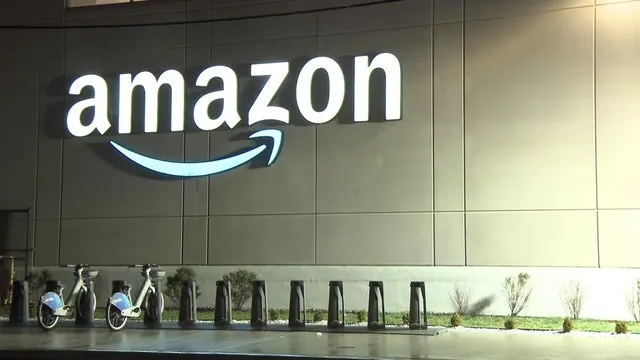
Amazon invests $20 billion in Pennsylvania data centers amid scrutiny
2025-06-09 21:11- Amazon announced a $20 billion investment in two data center complexes in Pennsylvania.
- One data center is to be constructed next to the Susquehanna nuclear power plant, while another will be at the Keystone Trade Center.
- This investment is expected to create job opportunities and enhance technological infrastructure in the state.
Express your sentiment!
Insights
In early June 2025, Amazon announced a significant investment of $20 billion to establish two data center complexes in Pennsylvania. One of the centers will be positioned adjacent to the Susquehanna nuclear power plant in northeastern Pennsylvania, while the other will be situated in Fairless Hills at the former U.S. Steel mill site known as the Keystone Trade Center. This move represents the largest corporate investment in the state's history, reflecting the growing demand for cloud computing and artificial intelligence infrastructure. The decision to place a data center next to a nuclear power plant highlights the need for reliable power sources to support energy-intensive operations. Amazon's Vice President of Global Data Centers, Kevin Miller, indicated that the company is responding to the increasing demand for data centers driven by the rise of artificial intelligence. The investment aligns with Amazon's broader strategy to enhance its capabilities in cloud computing, particularly in light of competition from other technology giants. The new facilities are intended to support the rapid growth in power requirements for servers and data processing systems that are essential for artificial intelligence applications. In the context of energy management, the planned data center by the Susquehanna nuclear power plant has drawn federal scrutiny due to a controversial arrangement termed a 'behind the meter' connection, which would allow Amazon to draw power directly from the power plant. This specific arrangement has raised concerns among regulators regarding equity for other power consumers and the long-term impacts of diverting energy to high-paying clients. The Federal Energy Regulatory Commission has yet to provide clarity on the regulatory implications of such deals, contributing to uncertainty surrounding Amazon's plans. Amazon's investment also holds broader implications for the local economy, as it is expected to generate numerous jobs and foster workforce development initiatives in the communities surrounding the facilities. Local leaders, including Governor Josh Shapiro, have welcomed the investment, emphasizing its potential to benefit the region significantly. In comparison to other states, recent investments by Amazon in data centers also include approximately $10 billion each in states like Mississippi, Indiana, Ohio, and North Carolina, reflecting a strategic effort to expand its infrastructure capabilities amidst growing competition in the tech industry.
Contexts
The impact of Amazon data centers on local energy supply is a critical topic that warrants thorough examination. As Amazon has expanded its cloud services, the establishment of data centers has significantly increased energy demand in various regions. These centers are energy-intensive operations, requiring substantial electricity for both computing resources and cooling systems. The proliferation of data centers raises important questions regarding their sustainability and implications for local energy grids. Understanding these dynamics is essential as communities grapple with the balance of powering these facilities while meeting the energy needs of residents and businesses. At the local level, the growth of Amazon's data centers can lead to both positive and negative outcomes. On one hand, the construction and operation of these facilities create jobs and can stimulate local economies. Additionally, they often require upgrades to energy infrastructure that can benefit other consumers in the area. However, the strain on local energy supply must be addressed. In some regions, data center operations have been linked to increased energy prices and can exacerbate existing challenges in energy equity. Local governments and utility companies need to strategize on how to accommodate these new demands without compromising service reliability for residents. Furthermore, Amazon's commitment to renewable energy initiatives plays a critical role in mitigating the environmental impact of its data centers. By investing in wind and solar power projects, Amazon aims to source 100% of its energy from renewable sources. This strategy not only helps to reduce the carbon footprint of their operations but also encourages local energy markets to adopt cleaner energy solutions. The partnership between Amazon and local energy providers can lead to advancements in grid resilience and may incentivize the growth of green energy projects, ultimately benefiting local communities. In summary, the establishment of Amazon data centers has a profound impact on local energy supply. While these facilities can drive economic growth and renewable energy innovations, they also pose challenges that must be managed carefully to ensure that energy needs of the local population are met. A collaborative approach involving local governments, utility providers, and Amazon itself is vital to maximize the benefits while minimizing the potential downsides associated with increased energy consumption.